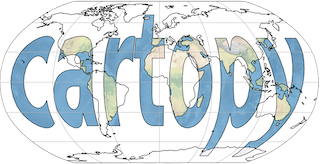cartopy.io.img_nest.Img#
- class cartopy.io.img_nest.Img(*args, **kwargs)[源代码]#
代表简单的地理定位图像。
- 参数:
filename -- 图像磁贴的滤镜。
extent -- 图像的(x_lower,x_upper,y_lower,y_upper)范围,以原生投影为单位。
origin -- 原产地名称。
pixel_size -- (x_scale,y_scale)像素宽度,以每个像素的原生投影为单位。
备注
未来API可能会发生变化,以包括CRS。
- count(value, /)#
返回值出现的次数。
- extent#
字段号1的收件箱
- filename#
字段号0的收件箱
- index(value, start=0, stop=9223372036854775807, /)#
返回值的第一个索引。
如果该值不存在,则引发Value错误。
- origin#
字段2的收件箱
- pixel_size#
字段号3的收件箱
- static world_file_extent(worldfile_handle, im_shape)[源代码]#
返回范围
(x0, x1, y0, y1)和像素尺寸(x_width, y_width)如给定的世界文件文件处理和关联的图像形状中定义的(x, y).
- static world_files(fname)[源代码]#
确定潜在的世界文件名组合,而无需检查它们的存在。
例如是
'*.tif'文件可能具有以下流行的世界文件扩展名惯例之一'*.tifw','*.tfw','*.TIFW'或'*.TFW'.给定可能的世界文件扩展名,也会生成大写字母组合。例如,文件“map. tif”将生成以下世界文件变体:“map. tifw”、“map. tfw”、“map. TIFW”、“map. TFW”、“MAP. tifw”、“MAP. tfw”、“MAP.TIFW”和“MAP. TFW”。
- 参数:
fname -- 获取所有可能的世界文件名组合的文件名称。
- 返回:
A list of possible world filename combinations.
示例
>>> from cartopy.io.img_nest import Img >>> Img.world_files('img.png')[:6] ['img.pngw', 'img.pgw', 'img.PNGW', 'img.PGW', 'IMG.pngw', 'IMG.pgw'] >>> Img.world_files('/path/to/img.TIF')[:2] ['/path/to/img.tifw', '/path/to/img.tfw'] >>> Img.world_files('/path/to/img/with_no_extension')[0] '/path/to/img/with_no_extension.w'
